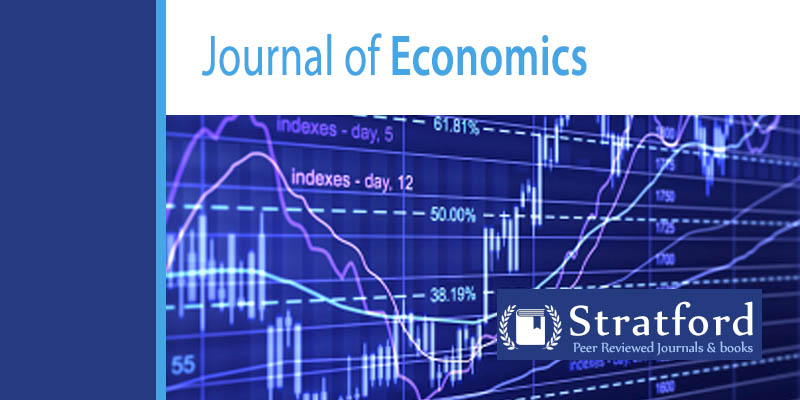Factors Influencing Effectiveness of Development Assistance and Humanitarian Aid in Developing Countries: A Literature Based Review
Keywords:
effectiveness of development assistance, humanitarian aid, developing countriesAbstract
An effective and timely humanitarian aid and developmental assistance is crucial for diversified development. Donor Aid Effectiveness remains a top priority for the international development community. Use of humanitarian aid and effectiveness of development assistance have received renewed consideration during the first years of the 21st century. At the Millennium Summit of 2000, the international community agreed on certain Sustainable Development Goals (SDG) to be reached by 2015. Literature based review was adopted in this paper. Various factors influencing effectiveness of Development Assistance and Humanitarian Aid have been identified. The factors include effectiveness of Development Assistance and Humanitarian Aid, donor assistance and humanitarian aid Internal Management Structure, monitoring and evaluation, donor polices and transparency and accountability in aid. Foreign aid has been contributory towards fostering broad-based development and complementing national development initiatives in the recipient countries. According to Radelet (2006), most foreign aid is designed to meet one or more of four broad economic and development objectives: stimulate economic growth through building infrastructure, supporting productive sectors such as agriculture, or bringing new ideas and technologies, strengthen education, health, environmental, or political systems, support subsistence consumption of food and other commodities, especially during relief operations or humanitarian crises and or to help stabilize an economy following economic shocks. However, there are controversies about aid effectiveness go back decades. Critics such as Milton Friedman, Peter Bauer, and William Easterly have revealed stinging critiques, charging that aid has enlarged government bureaucracies, perpetuated bad governments, enriched the elite in poor countries, or just been wasted. Undoubtedly some aid is given with humanitarian motives in mind; however, according to the literature, most foreign aid is given for variety of political, strategic and economic reasons that benefit the donor countries in the longer term. Official Development Assistance (ODA) is often designed to achieve political objectives rather than increase the prosperity of recipient countries.
Key words: effectiveness of development assistance, humanitarian aid, developing countries
References
Aid Watch (2010). Penalty against Poverty: More and better EU aid can score Millennium Development Goals, Aid Watch Report, AidWatch, New York.
Alesina, A. & Dollar, D., (2002). Who Gives Foreign Aid to Whom and Why?, Journal of Economic Growth, 5(1), 33–63.
Barder, O., (2012). Is Multilateral Aid Better,” available at http://www.owen.org/blog/6128.
Biscaye, P. E., Reynolds, T. W., & Anderson, C. L. (2017). Relative Effectiveness of Bilateral and Multilateral Aid on Development Outcomes. Review of Development Economics, 21(4), 1425-1447.
Biscaye, P., Harris, K. P., Reynolds, T., & Anderson, C. L. (2015). Relative effectiveness of bilateral and multilateral aid on development and social outcomes. Evans School of Policy Analysis and Research (EPAR) Brief, 294.
Cassen, R., (1994). Does Aid Work? Report to an Intergovernmental Task Force, 2nd edn, Oxford: Clarendon Press.
Charron, N., (2011). Exploring the Impact of Foreign Aid on Corruption: Has the Anti- Corruption Movement” Been Effective?” The Developing Economies 49 (11), 66–88.
Coppard, D., T. German, & Randel, J. (2013). Investments to End Poverty: Real Money, Real Choices, Real Lives, Bristol, UK: Development Initiatives.
Crilly R. (2010). Saving Darfur: Everyone’s Favourite African War. Reportage Press, (London, UK).
Elayah, M. (2016). Lack of foreign aid effectiveness in developing countries between a hammer and an anvil. Contemporary Arab Affairs, 9(1), 82-99.
Goldin, I., H. Rogers, & Stern, N. (2002). The Role and Effectiveness of Development Assistance: Lessons from World Bank Experience. The World Bank, Washington D.C.
Jensen, M. C., & Meckling, W. H. (1976). Theory of the firm: Managerial behavior, agency costs and ownership structure. Journal of financial economics, 3(4), 305-360.
Kersten J. (2009). Stuck in the ‘recovery gap’: The role of humanitarian aid in the Central African Republic. Humanitarian Exchange Magazine 43, Humanitarian Practice Network, (2009): 28-30.
Kharas, H., (2010). Rethinking the Roles of Multilaterals in the Global Aid Architecture, Making Development Aid More Effective: The 2010 Brookings BLUM Roundtable Policy Briefs: 55–61.
Lewis, D. (2009). Non-Governmental Organizations and Development. New York: Routledge, Taylor and Francis.
Milner, H. &. Tingley, D. (2010). The Political Economy of U.S. Foreign Aid: American Legislators and the Domestic Politics of Aid. Economics and Politics, 22(2):200-232.
Milner, H. V. & Tingley, D. (2013). The Choice for Multilateralism: Foreign Aid and American Foreign Policy. The Review of International Organizations, 34(13),313–41.
OECD (2015). Total Net Flows from DAC Countries by Type of Flow, Statistics on Resource Flows to Developing Countries,” OECD, Paris, available at http://www.oecd. org/dac/stats/statisticsonresourceflowstodevelopingcountries.htm.
OECD, (2011). The Paris Declaration on Aid Effectiveness and the Accra Agenda for Action,” OECD, Paris, available at http://www.oecd.org/dac/effectiveness/parisdeclarationandacc raagendaforaction.htm (2008). -, Aid Effectiveness 2011: Progress in Implementing the Paris Declaration. Better Aid, Paris: OECD.
OECD-DAC (2010). Development Aid Reaches an Historic High in 2010: www.tinyurl.com/oecd2010.
OECD report (2010). Report on Aid Predictability, Survey on Donors’ Forward Spending Plans 2010–2012, OECD, Paris.
Richardson F. (2006). Meeting the demand for skilled and experienced humanitarian workers. Development in Practice 16, no. 3/4, (2006): 334-341.
Round, J. and Odedokun, M. (2004). Aid Effort and its Determinants. International Review of Economics & Finance (13)3,293-309.
Veiderpass, A., & Andersson, P. (2007). Foreign aid, economic growth and efficiency development. Swedish Agency for Development Evaluation (SADEV) Reports, 1.
World Bank, (2010). World Development Indicators, World Bank, Washington, DC.


